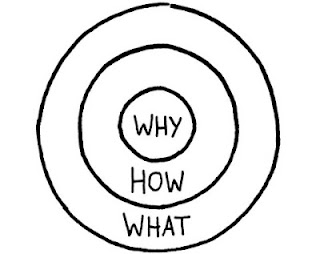From Donald Trump to Oprah Winfrey, the “secret” to success seems always to be ‘follow your passion.’ I, for one, always get lost with this directive. To me, it’s akin to telling someone to embrace their “freedom.” Okay, what the hell am I supposed to do with that?
Passion is a loaded term. That soup of spiritual, emotional, mental, physical and social longing and satisfaction each have unique answers. The challenge is to bring alignment that satisfies all elements of your person. I’ve found myself chasing mental “passion” only to drain all energy from my physical body and vice versa.
So what’s alignment? As noted in the post starting the “why” series, we have spent all of our lives growing up with the question, “what do you want to be when you grow up?” The real question is WHY do you want to be when you grow up? Below the surface of the what is a reason that drives you. The alignment of the why, how and what are the critical recipe to figuring out the “passion” question.
Simon Sinek does a nice job of explaining the approach of the what versus the why by illustrating the Golden Circle. (If you haven’t seen his TED talk check it out.)
When I was 15, my deepest longing was to direct movies. I spent years in the theatre trying my hand at acting, directing, and a ton of time in the technical production. Other masters came into my life, and in the pursuit of their satisfaction I quashed the dream. Finally at 27, I thought the passion was to be a lawyer. I looked at the “what” of being a lawyer–power, money and success– rather than the “why”–helping people. I went down that ridiculously difficult road only to find that the inside of the what was different than the outside of the why.
So, how do you get to the heart?
- Remove the “whats.” We spend a great deal of time–especially in our culture–driving to the features of our lives: what kind of clothes we wear to work; what kind of car we will drive; what kind of house we’ll live in. etc. These are all results or features, and they cannot drive the decision.
- What is the problem in the world that gets you excited? For me, after years of searching, I believe that people and organizations are uniquely situated to be incredible, but they don’t always see the path to excellence.
- What can you do better than anyone else to solve that problem? Again, for me, I believe that by spending time with people and organizations, listening to them, and bringing into focus the “thing” that really drives them, I am helping to unleash potential.
- There lies the WHY. My purpose or WHY statement is to unleash potential. The purpose should be boiled down to one or two words and be very simple.
- How do you do it? The how is the bridge from the why to the what. It becomes the rules or a framework that directs the purpose into the action. For example:
- I want everyone to succeed mentally, spiritually, and emotionally in both personal life and in your professional life. This may mean that you are prepared for a job greater than I can offer. This may result in you becoming my boss. This may lead to alternate and unexpected employment.
- I will not make comment/criticism that doesn’t generate a positive result.
- I will never condemn you for something that I cannot change.
- Finally, what’s the what? At this point it is very easy to determine what you can do, but more importantly it determines what you can’t do. The realm of opportunity is limited by the answers to the preceding questions. So, it is easy for me to say based on my purpose and promises that I would not, for example, be satisfied as a scientist working in a lab all day because I would not be unleashing the potential of people.
One day while wondering, I came across three bricklayers. I asked the first bricklayer what he was doing.
“laying bricks,†he told me.
I asked the second what he was doing.
“Making a brick wall,†he told me.
I asked the third.
“Building a cathedral,†he explained.
Once you’ve identified the purpose, every action that you make in your life has greater meaning and significance. Suddenly, there is alignment between your actions and your goals, and then I would say, you can truly be passionate.

Pingback: Personal Orientation: Path to "True North" - Jeremy Floyd | Jeremy Floyd()
Pingback: Can you stand in your leader's shadow? - Jeremy Floyd | Jeremy Floyd()
Pingback: The 5 Most Influential Business Books of the Current Decade - Jeremy Floyd | Jeremy Floyd()